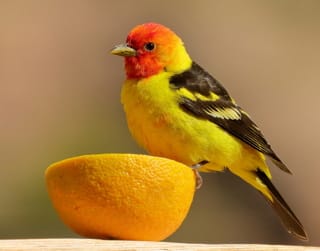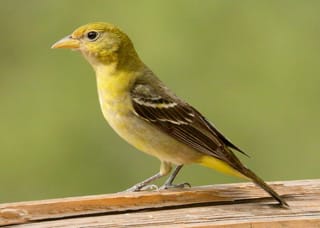Initially this guide displays common birds of all types that are flying right now in our area. Use the selectors below to view rare birds, view birds flying any time, restrict the output to a certain shape of bird, or search by name.
New Mexico is on the western edge of the Central Flyway which is one of the major migration pathways between north and south for birds traveling between breeding and wintering grounds along the Rocky Mountains. This has resulted in the state having an incredible diversity of birds with over 550 different species reported. A little more than half of this number are sighted annually on the Pajarito Plateau. Some of these birds are full-time residents, some migrate here for a few weeks or months, and other are only seen briefly as they pass through the region.
This guide features many of the birds known to frequent Los Alamos county by when they are likely to be seen in the area. You can get additional information on local birds by joining PEEC Birders or going to the eBird website. eBird also includes lists of rare bird sightings and birding hot spots.
Bird References
Birdweb
Cornell Lab of Ornithology
eBird
eNature
Institute for Bird Populations
National Audubon Society
New Mexico Ornithology Society
What Bird
xeno-canto
Subject Area Experts (all guides)
Steve Cary (butterflies)
Beth Cortright (insects)
Terry Foxx (invasive plants)
Leslie Hansen (mammals)
Richard Hansen (fish, mammals)
Dorothy Hoard (butterflies, trees)
Chick Keller (flowers, herbarium)
Shari Kelley (geology)
Kirt Kempter (geology)
Garth Tietjen (reptiles)
David Yeamans (birds)
Web Development and Content Management
Pat Bacha
Jennifer Macke
Graham Mark
Akkana Peck
Contact
Please contact us for local nature questions and sightings. We welcome comments, corrections, and additions to our guides.
For more information about local nature, please visit our Nature Blog or subscribe to PEEC This Week.
Make Selection
 Photo: breeding male by Bob Walker  Photo: non-breeding male by Bob Walker  Photo: female by Bob Walker |  Western TanagerWETA (Piranga ludoviciana)Family: Cardinalidae (Cardinals, Grosbecks, and Allies) Size: 6 - 7.5 in (15 - 19 cm) Flies: Apr 01 - Oct 07 Morphology: breeding males are yellow with black wings and a flaming orange-red head; non-breeding males are a duller yellow with limited red on the head; females are mostly yellow-green with gray contrasts Status: native; common Food source: mostly insects, some fruit, and berries Habitat: open coniferous forests The Western Tanager is a migratory bird spending its winters in Mexico and Central America and its summers in the western US and Canada. These birds may migrate alone or in groups of up to a few dozen. They primarily forage from tree tops, either gleaning insects by plucking them from the foliage or hawking which consists of flying out and catching them mid-air. In addition, they will eat fruit from feeders. Western Tanagers nest in high mountains and coniferous forests. The female builds a open cup-shaped nest and lays 3 to 5 bluish eggs. The young hatch in about 2 weeks and usually leave the nest 2 weeks later. Western Tanager nests may be parasitized by Brown-headed Cowbirds which reduces the number of tanager young that fledges. Info Photos Distribution Frequency |
